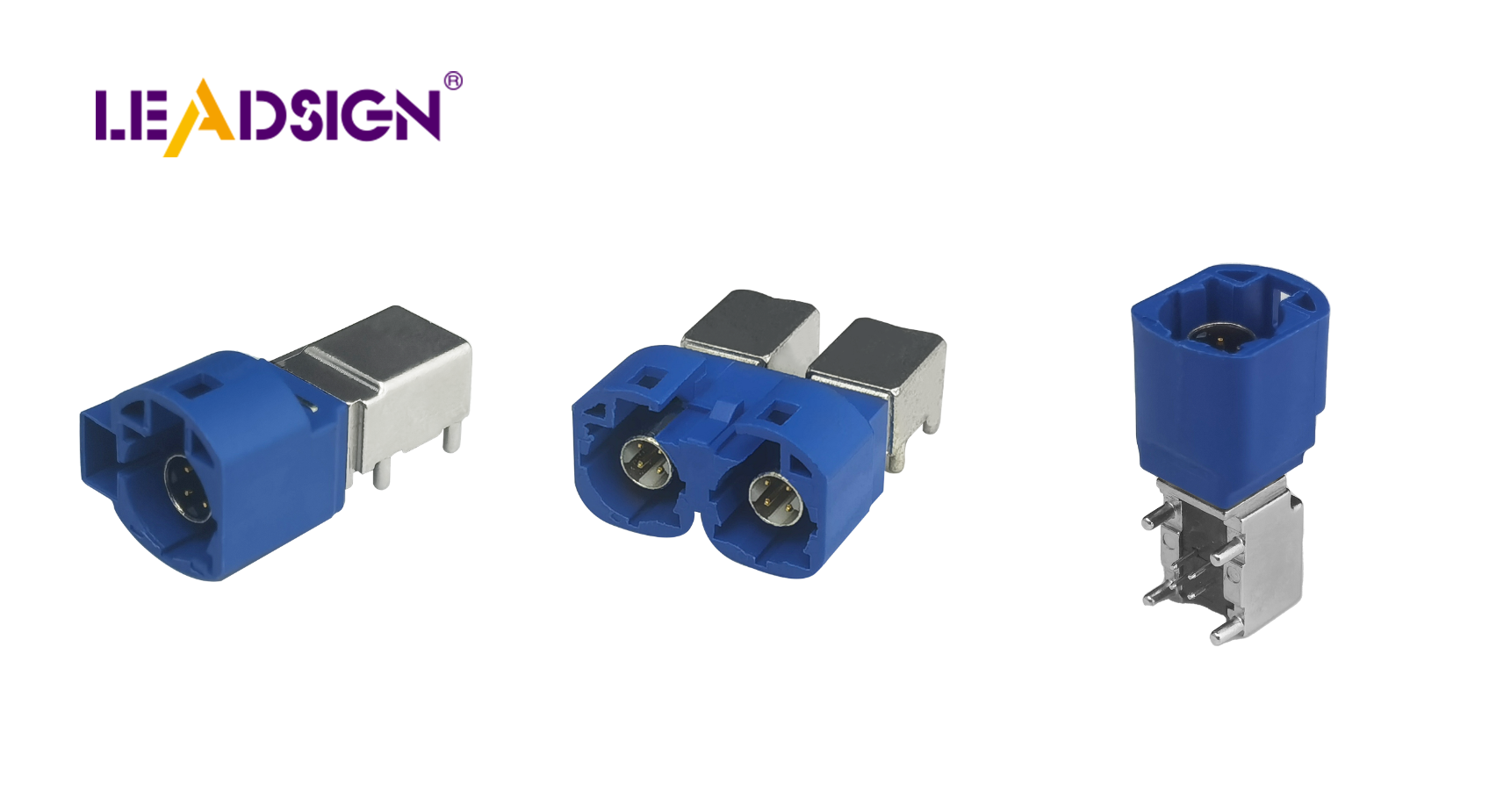How PCB Board to Wire Connectors Enhance Circuit Reliability

PCB board to wire connectors are important for reliable electronics. They connect wires to PCBs, allowing signals to flow smoothly. They help avoid problems like short circuits by keeping circuits separate. Protective materials and grounding make them safer and stronger. These connectors keep connections steady, stopping performance issues. Their design makes adding wires to systems easier, which is why they are key in modern tech.
Key Takeaways
PCB board to wire connectors are essential for reliable electronics, ensuring smooth power and signal flow.
These connectors prevent issues like short circuits and signal interference, enhancing overall device performance.
Their design allows for easy maintenance and upgrades, saving time and protecting circuit boards during repairs.
Using high-quality materials and innovative designs, modern connectors withstand harsh conditions and support high-speed data transfer.
Wire-to-board connectors are versatile, making them suitable for various applications in everyday electronics, automotive, and industrial machinery.
Choosing the right PCB connectors can significantly improve the longevity and reliability of your electronic devices.
Understanding PCB Board to Wire Connectors

What Are PCB Board to Wire Connectors?
PCB board to wire connectors are key parts of electronics. They join wires to PCBs, helping power and signals move easily. These connectors come in types like crimp, IDC, and solder ones. Each type works for specific tasks, offering flexibility and dependability.
Think of these connectors as bridges linking wires to circuits. They connect things like sensors or power supplies to the PCB smoothly. This makes devices work well while staying strong. For example, crimp connectors attach wires with terminals that fit into housings. This setup is simple and holds connections firmly.
Wire-to-board connectors are also helpful for testing and fixing devices. Their easy design lets you swap parts without tricky soldering steps. Engineers and technicians find them very useful when working on electronics.
The Role of PCB Connectors in Electronic Devices
PCB connectors are crucial for modern electronic gadgets to work properly. They link circuits, subsystems, or outside parts together effectively. Without them, devices couldn’t send power or data correctly.
In gadgets, PCB connectors keep connections steady and reliable. They stop loose wires from causing problems or breaking equipment. For instance, wire-to-board connectors have locks that hold terminals tightly in place. This prevents movement even under stress or tough conditions.
These connectors make devices last longer by using strong materials and smart designs. Some can handle high-speed data like USBs or Ethernet connections easily.
Also, PCB connectors make building and fixing gadgets faster and easier. You can quickly add or remove parts during production or repairs. This is important in industries like cars, home electronics, or factories where speed matters a lot.
"If a device has PCBs, it will need PCB connectors too."
By connecting inside systems with outside ones, PCB connectors help gadgets run smoothly. They do more than just link parts; they boost how well the device works overall.
Keeping Connections Stable
PCB connectors help keep power flowing steadily in circuits. They let power and data move smoothly between parts of a device. Unlike soldering, which can harm nearby parts with heat, PCB connectors are safer to use. They lower the chance of mistakes and keep connections strong.
Many PCB connectors have locks and tight grips for cables. These features stop wires from coming loose, even if there’s shaking or stress. Using these connectors makes your circuit board work better and more reliably.
Reducing Signal Problems
Signal problems can make devices work poorly. PCB connectors help by keeping wires neat and organized on the board. This setup lowers the chance of signal interference, especially with fast data transfers where small issues can cause big trouble.
Some PCB connectors have special materials that block outside noise. These materials protect signals so they stay clear and strong. By using these connectors, your devices become more reliable and last longer.
Making Repairs Easier
PCB connectors make fixing or upgrading devices simple. Their design lets you swap parts without tricky soldering steps. This saves time and protects your circuit board from damage during repairs.
For example, crimp connectors hold wires firmly but are easy to remove when needed. This is helpful in industries like car making where quick changes are common. With PCB connectors, it’s easier to fix or improve electronics while keeping them dependable.
"PCB connectors help you focus on creating better designs instead of worrying about bad connections."
Adding PCB connectors to your designs improves how well your circuit boards work. They make devices perform better while being easier to fix and upgrade over time.
Uses of Wire-to-Board Connectors in Different Fields
Wire-to-board connectors are important for linking parts in many areas. They help circuit boards and other electronic parts work together better. This improves how well devices perform and makes them more reliable.
Everyday Electronics
In everyday electronics, wire-to-board connectors are very useful. They join parts inside gadgets like phones, laptops, and game consoles. These connectors let power and data move smoothly, helping devices work properly. For example, they connect phone batteries to circuit boards for steady power.
These connectors also make fixing or building electronics easier. Their simple design allows quick part swaps without harming the device. This is helpful where fast repairs are needed often. Using these connectors makes products last longer and work better.
"From phones to smart home gadgets, these connectors keep things running."
Car Electronics
Cars depend on wire-to-board connectors for their smart features. These include engine controls, safety tools, and entertainment systems. For instance, they send data quickly between cameras or sensors in cars.
Car environments can be tough with heat or shaking, but these connectors stay strong. They keep connections stable even under hard conditions. This helps cars stay safe and perform well.
Wire-to-board connectors also make adding new tech to cars easier. As car tech grows smarter, these connectors allow upgrades without major rewiring. This helps meet the demand for advanced vehicles.
Factory Machines
Factory machines need wire-to-board connectors to run smoothly and precisely. They link parts in robots or automated systems so everything works right. These connectors handle fast data flow needed for modern factories.
They also make machines tougher by resisting damage from wear over time. For example, they ensure factory lines keep moving without problems.
Additionally, these connectors let you add or change machine parts easily when needed. This flexibility helps factories adjust to new tasks quickly.
"Wire-to-board connectors quietly power industrial progress with strength and accuracy.
Advancements in PCB Connector Technology
New Materials and Smart Designs
Better materials and designs have made PCB connectors work better. Makers now use strong plastics like PEEK and LCP. These plastics block electricity, handle heat, and resist chemicals. They are great for tough jobs like high-frequency tasks or hot soldering.
New designs focus on making connectors last longer. Special metal mixes are used for connector parts. These metals carry electricity well, don’t rust, and stay strong over time. Smaller, modular designs save space on circuit boards too. This helps when building devices with little room inside.
Engineers also make connectors easy to use. Snap-fit parts and locks make them simple to attach or remove. These features keep connections tight even in hard conditions. Using these new materials and designs makes electronics more reliable.
Better Features for Performance
PCB connectors now have cool features that improve how they work. They can send data super fast without problems, like USB 3.0 or Ethernet needs. This helps devices share information quickly between their parts.
Some connectors can handle rough environments better too. They survive shaking, heat, or wet places without breaking easily. For example, strong cable grips stop wires from coming loose during movement.
Connectors also have special codes to avoid mistakes when connecting wires. This is helpful for complex setups with many connections to manage.
These upgrades not only make your circuit boards stronger but also easier to design and build! Adding these features means your devices will work well for a long time.
PCB board to wire connectors help electronic devices work well. They keep connections steady, letting power and signals move easily. Picking the right connector makes circuits stronger and last longer. These connectors adjust to new tech, with features like fast data transfer and tough designs for hard conditions.
"PCB connectors are more than links; they support modern electronics."
Their flexibility makes them useful in many fields, like gadgets, cars, and factories. Using these connectors keeps your devices dependable and ready for the future.
FAQ
What are PCB board to wire connectors used for?
These connectors join wires to circuit boards in devices. They help power and signals move smoothly in electronics. You’ll see them in gadgets, cars, and factory machines.
How do PCB connectors improve circuit reliability?
PCB connectors keep electrical connections steady and secure. They stop wires from coming loose or causing short circuits. Their design also reduces signal problems even in tough conditions.
Are PCB connectors suitable for high-speed data transfer?
Yes, many can handle fast data transfers easily. For example, USB 3.0 and Ethernet-ready ones send data quickly without issues. This makes them great for modern devices needing quick communication.
Can PCB connectors withstand harsh conditions?
Many are made to survive heat, shaking, and moisture. Strong grips and protective materials keep connections safe under stress. These features make them durable in tough environments.
What types of PCB board to wire connectors are available?
There are crimp, IDC, and solder types available. Crimp ones hold wires tightly; IDC ones are easy to install; solder ones create permanent bonds.
How do PCB connectors simplify maintenance?
They make fixing or upgrading devices simple by avoiding soldering steps. This saves time while protecting the circuit board during repairs or updates.
Where are wire-to-board connectors commonly used?
You’ll find these in phones, cars, and factory robots. They connect parts inside electronics like consumer gadgets or industrial machines for smooth operation.
What advancements have been made in PCB connector technology?
Newer designs use strong plastics like PEEK that resist heat well. Snap-fit parts and compact sizes make them easier to use in tight spaces too.
How do PCB connectors reduce signal interference?
They organize wires neatly on boards to avoid interference issues. Some also block outside noise with special shielding materials for clear signals.
Why should you use PCB connectors in your designs?
PCB connectors make devices work better and last longer. They’re easy to assemble, handle advanced features like fast data transfer, and stay reliable over time.
See Also
Why FAKRA Connectors Are Essential for PCB in Cars
Boosting Data Flow Using FAKRA Connectors for PCBs
Key Benefits of FAKRA Connectors for Automotive PCBs
Advantages of Implementing FAKRA Connectors in Automotive PCBs
Improving Automotive Data Transfer with FAKRA PCB Connectors

